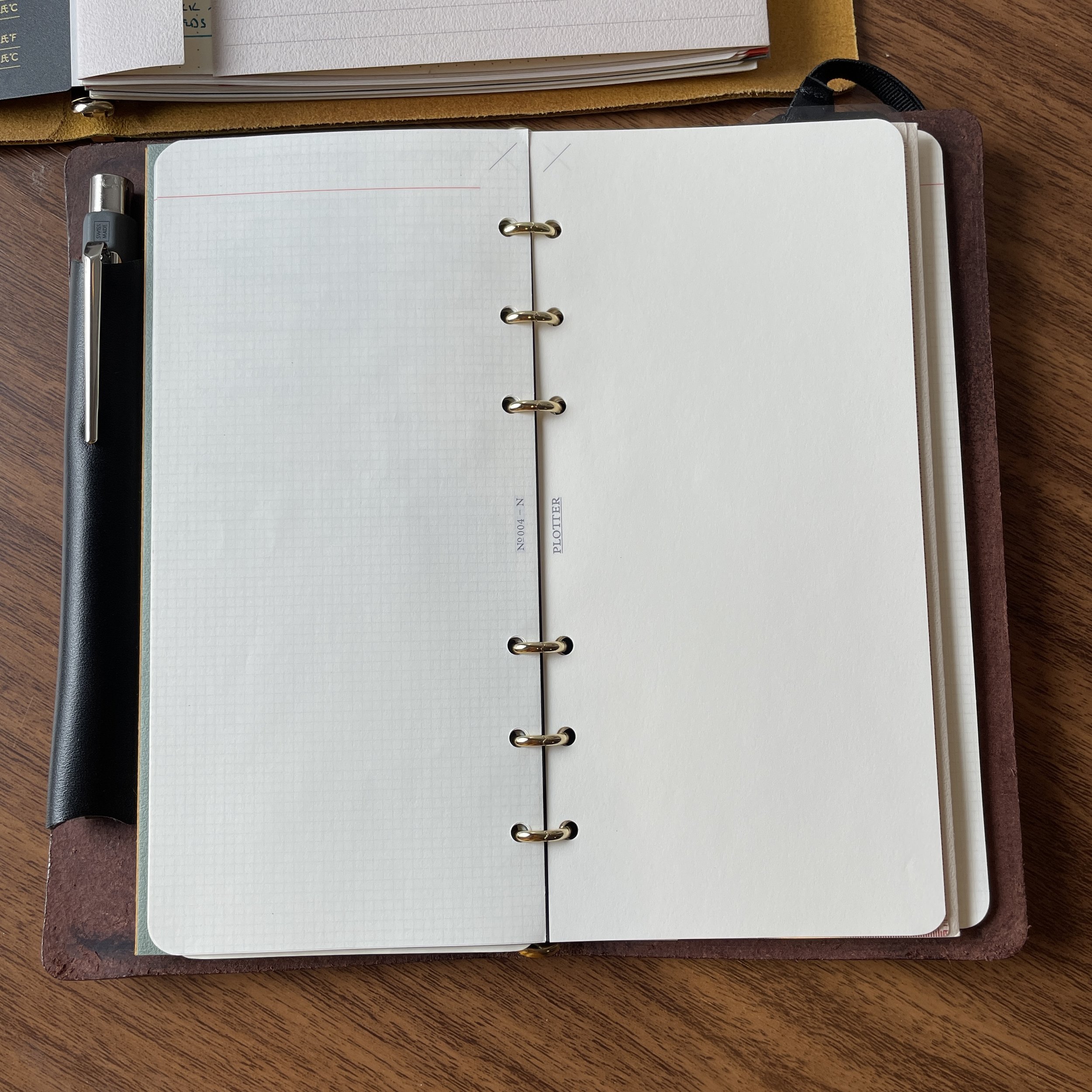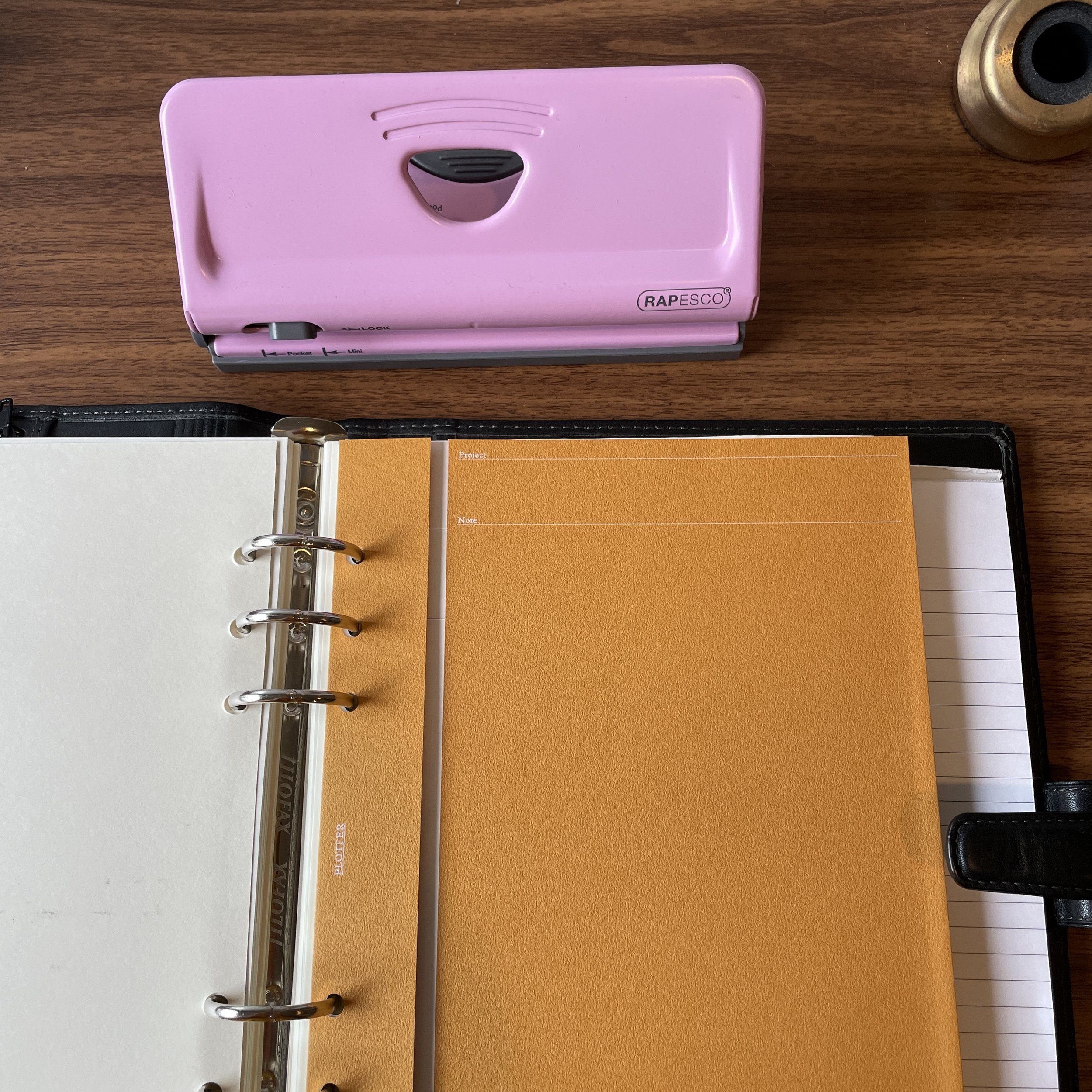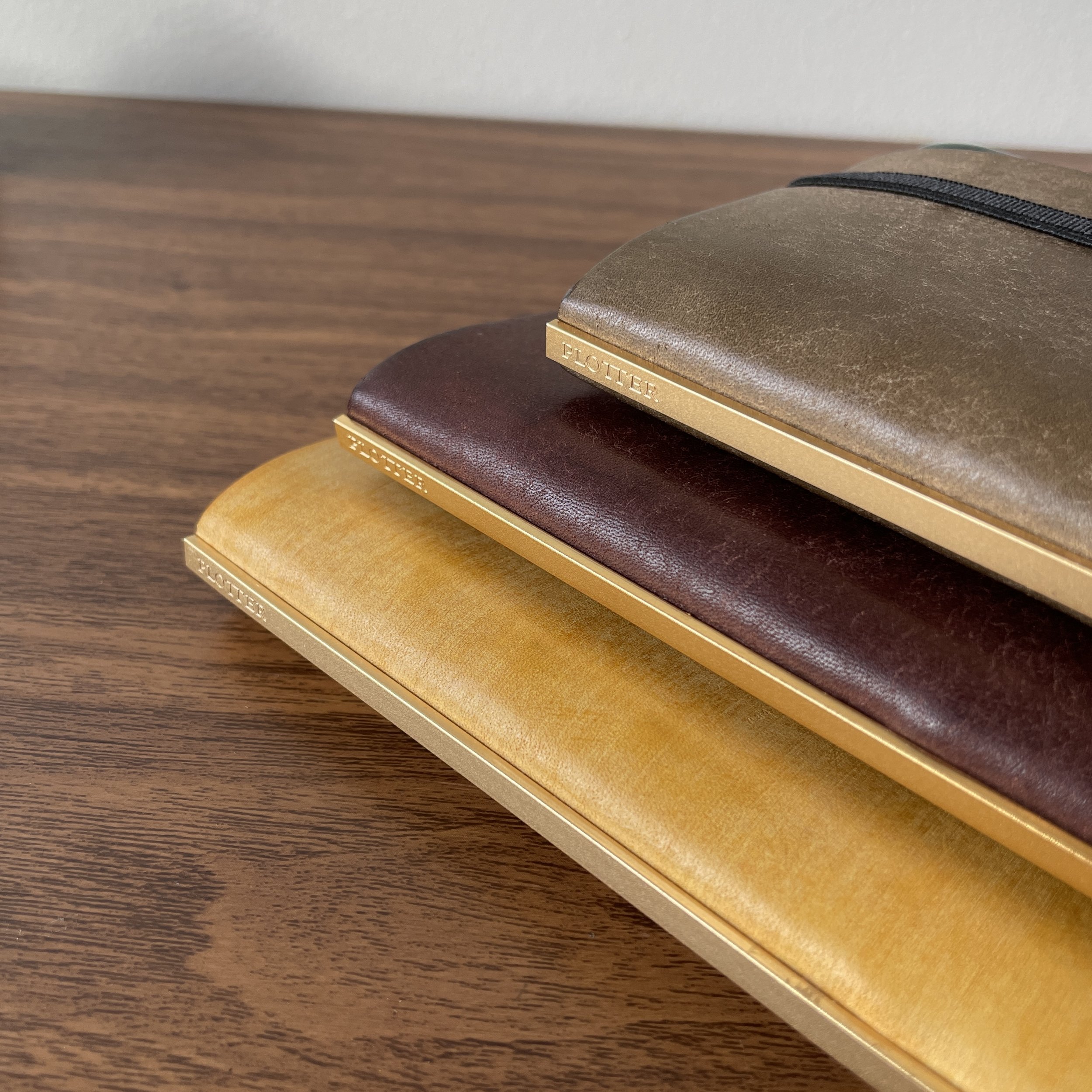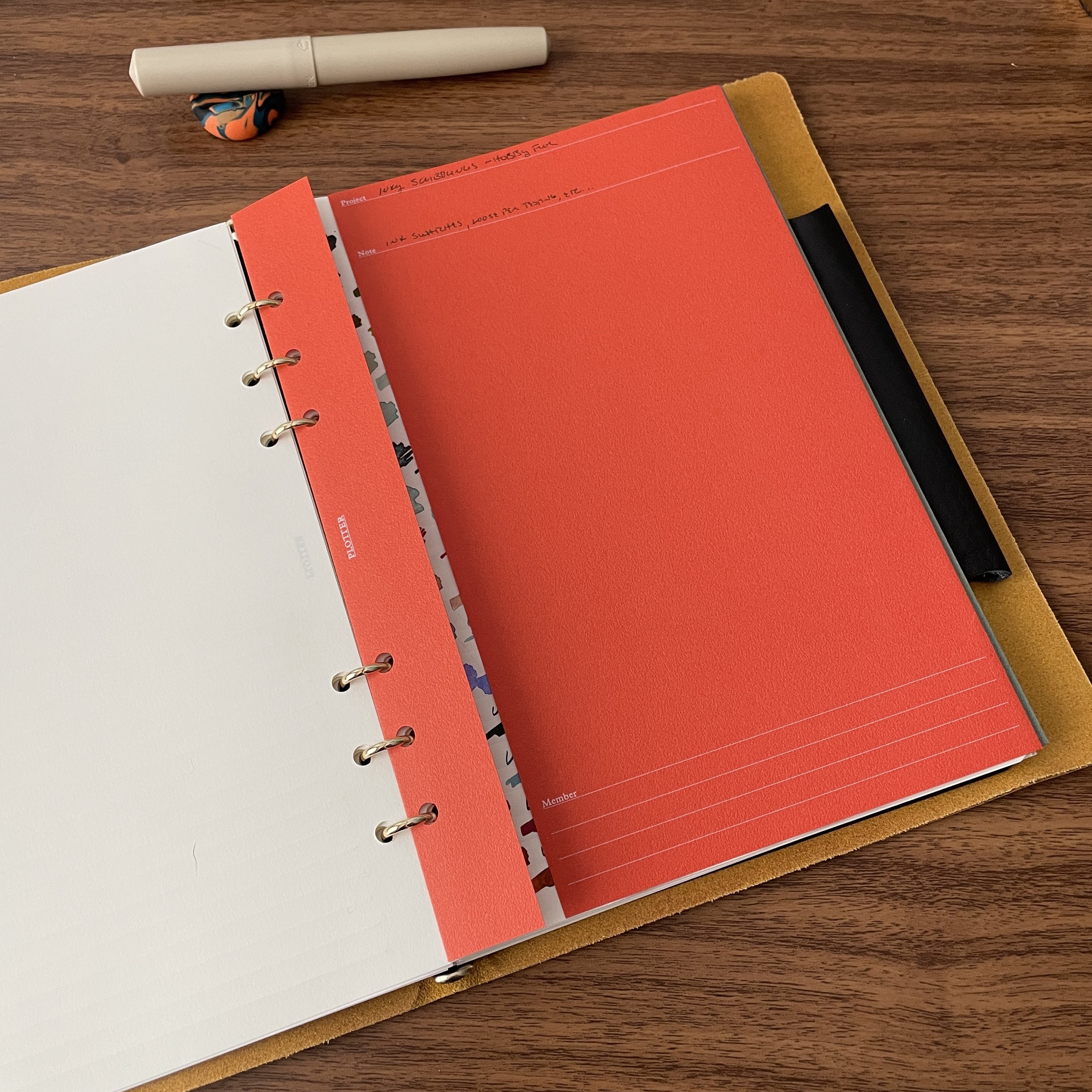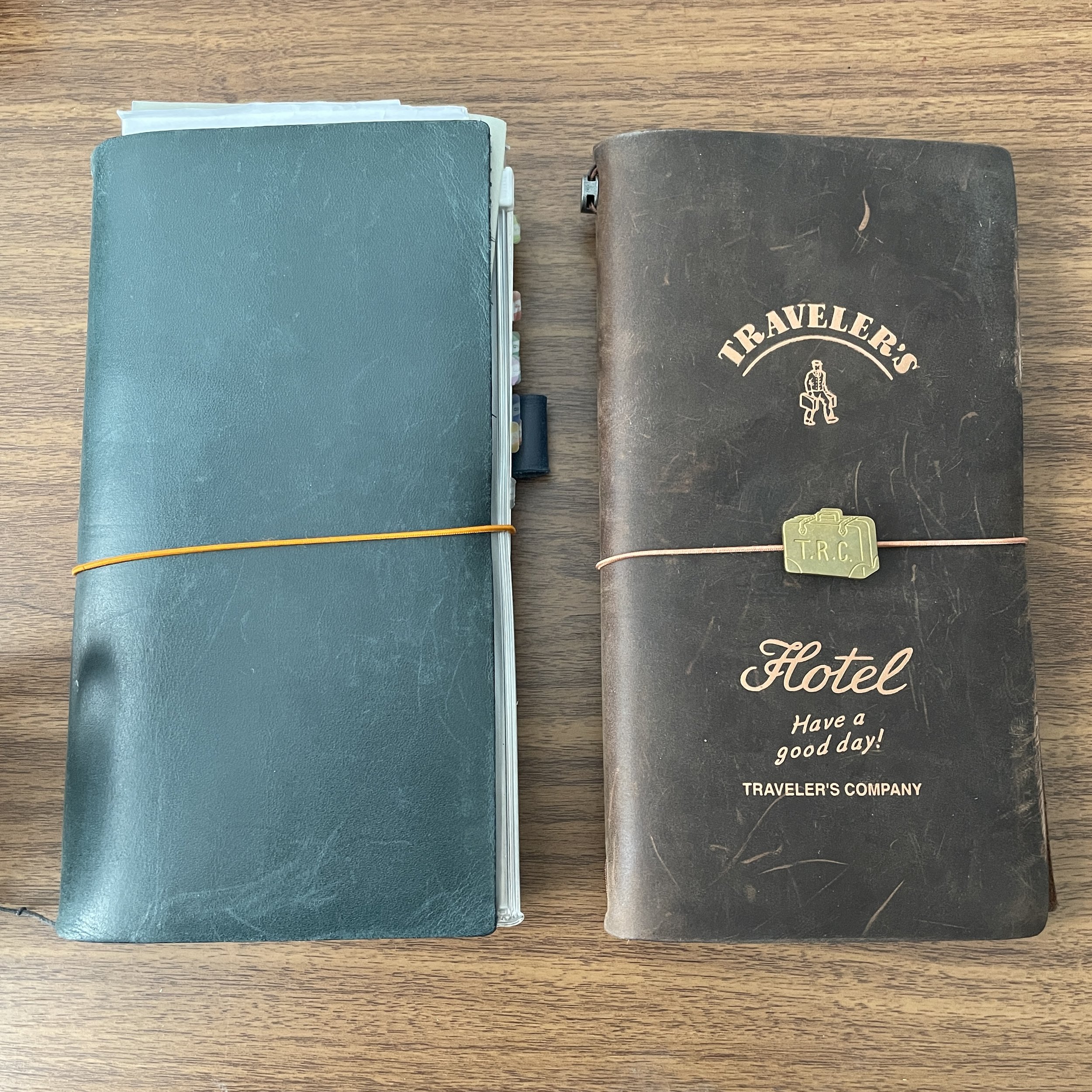Welcome to the third Saturday installment of my “Guide to Notebook Systems” Series! Today we’ll be talking about Traveler’s Company, a brand I’ve actually written about a lot, since it’s been on the market for many years, and the Traveler’s Notebook, which represents one of the longest-standing items in my stationery toolkit. The Traveler’s Notebook falls into what I would call the “notebook cover plus modular refill” category of notebook systems, meaning that the central component is the leather cover starter kit, which you can customize by adding different refill booklets and functional accessories, all held in place with elastic cords. The main difference between these types of systems and a “System Techo” like Plotter is, of course, that you have to operate at the “notebook level” rather than with individual pages.
My two Traveler’s Notebooks, which contain both my pen show journal (top) and work notebook (bottom).
The Traveler’s Notebook is versatile, and I’ve used it in many different ways over the years as my needs have changed. When I first started out, I used it as a traditional paper planner. The Traveler’s Company undated “Weekly + Memo” planner refills usually lasted me a little over six months, and if you prefer the day-to-a-page format, the “Free Diary,” lasted around three. These days, I don’t use a paper planner to keep a calendar, so my Traveler’s Notebooks have morphed into more of a “journal”. Here’s what I mean:
For work (as in, my day job), I like to keep a written record of what I work on each day. My current writing setup isn’t a Traveler’s Notebook refill, but rather a cut-down Stalogy half-year journal that I’ve combined with these Midori MD Calendar stickers and section divider stickers to create some sort of “planner”-BuJo (bullet journal) hybrid. Essentially, I’ll use 2-3 pages for a week and write brief summaries of how I’ve spent my time and what I’ve accomplished on each day, while also including important meeting notes and tracking longer term tasks. At the back of my “work” Traveler’s Notebook, I’ve included a standard blank refill that’s essentially used as scratch paper.
I also keep a second “personal” Traveler’s Notebook that I recently added, which is one of the “Traveler’s Hotel” 2022 limited editions. I’m more of a hotel enthusiast than an aviation or train buff, so the choice was fairly easy. For 2022, this notebook has become my “pen show” journal, and it contains stickers, photos, writing samples, and personal notes from all of my pen show travel. I’m honestly not sure what I will use this for in 2023, or whether I will consolidate my Traveler’s Notebook carry under a single cover as I rely more on Plotter.
Traveler’s Company undated planner refills are insanely versatile. The Weekly+Memo Refill is a favorite.
So who is this sort of notebook system for, and what are its advantages and disadvantages?
Someone who likes to journal, especially creatively. The major advantage to these modular systems, and especially established ones like Traveler’s Notebook, is that there is a wide array of existing refills and accessories for pretty much any use case. Would you like to watercolor in your journal? There’s a refill for that. Prefer thicker drawing or sketch paper? Ditto. There are even kraft paper refills for scrapbooking.
Someone who travels a lot (hence the name) and doesn’t want to carry multiple notebooks with them. With modular systems, you can carry your planner, journal, and sketchbook all in a single cover yet in separate “notebooks”. There are a variety of pouch and folder accessories to carry things like printed tickets, itineraries, and receipts. The Standard Traveler’s Notebook has a tall, narrow format that’s easy to slip into a bag, and the smaller Passport version is even more compact. If you prefer something that uses larger refills with more writing surface, both the Lochby Field Journal and the Roterfaden covers operate on a similar principle (though Roterfaden uses clips instead of cords).
Someone who doesn’t need to move around, file, or dispose of individual pages of notes. This is what makes the Traveler’s Notebook system difficult for me to use for things like meeting and research notes, and why I will likely lean more heavily on “System Techo” ring-based systems in the future for these purposes. But if you have fairly specialized job responsibilities, or don’t need to segregate your notes by a large number of clients or projects, a Traveler’s-style system may work just fine.
If the “tall narrow” notebook format isn’t your thing, Lochby (shown here) and Roterfaden both make A5 modular covers capable of holding multiple refills (or even multiple full-size notebooks).
Further Reading and Retail Options
I’ve previously written several different posts on the Traveler’s Notebook system, which describe various layouts I’ve used over the years, how I went about cutting down the Stalogy half-year notebook, and a short guide on how to attach multiple refills and literally stuff the notebook to the gills. In short, there’s a lot out there if you’re curious. (Pro Tip: These notebooks are capable of holding MUCH more than two refills, and I can’t emphasize enough the versatility of the system. The benefit of having a large established community of users is that you can run a simple internet search and immediately discover dozens of ways to set up the notebook.)
I do have to admit, I’m biased towards this system because I love the aesthetic, the spirit behind it, and the “go-anywhere” functionality. When I started up the T.G.S. Curated Shop, one of the products on my shortlist of things I wanted to carry was the Traveler’s Notebook, and Traveler’s Company was kind enough to immediately approve me as a retailer even though I was small and just starting out. I’m glad so many people seem to agree that this is a wonderfully versatile system that can bring you years of enjoyment even as your needs evolve over time. If this system interests you, you can check out the full range of Traveler’s Notebooks and Accessories in our curated selection of goods.
This post is part of a larger ongoing series on Notebook Systems. If you missed the first two installments, you can get caught up starting with Part I, which gives a general overview of Notebook Systems and System Techo in general, and Part II, which specifically discusses the Plotter ring-based system and how I’ve been using it. This post does not contain third-party affiliate links or paid sponsorships, as the Gentleman Stationer is supported entirely by purchases from the T.G.S. Curated Shop and pledges via the T.G.S. Patreon Program.

